Fuji X-E1 Vs. Olympus OM-D E-M5 Part 1:
The Fuji X-Pro1 has always been compared to the Olympus OM-D with good reason: Along with different cameras from other manufacturers, such as, Sony, they’re at the top of the mirrorless class. However, the problem with the X-Pro1 was that it was always priced way to high to compete fairly with the OM-D. To remedy this, Fuji created a camera with similar traits as the X-Pro1 but at a price that was more competitive with the OM-D: enter the Fuji X-E1.
The X-E1 and the OM-D are natural competitors for several reasons. First off, they’re both mirrorless cameras, and they both fit perfectly into their respective niches. Both bodies are not only priced about the same, even their kit packages are priced about the same. Furthermore, both cameras offer a beautiful choice of lens, which helps them achieve exceptional image quality, and are built extremely well.
So what makes these two cameras different enough so that some people are diehard OM-D fans, and some people swear by Fuji? Well, in my opinion, I really think that both of these companies have different approaches to what they believe makes the best mirrorless camera. Both these cameras definitely have different strengths but they also have different weaknesses. I was fortunate enough to borrow an OM-D for quite some time, and I believe that some of the results are expected while there are some that were quite surprising. I was also able to borrow the Panasonic 25mm F1.4, which I’m going to compare to the XF 35mm F1.4 R lens in part two of this comparison. There might be a part 3, which will compare the two kit zooms. So let’s get started with this comparison :).
Build Quality of The Fuji X-E1 And Olympus OM-D:
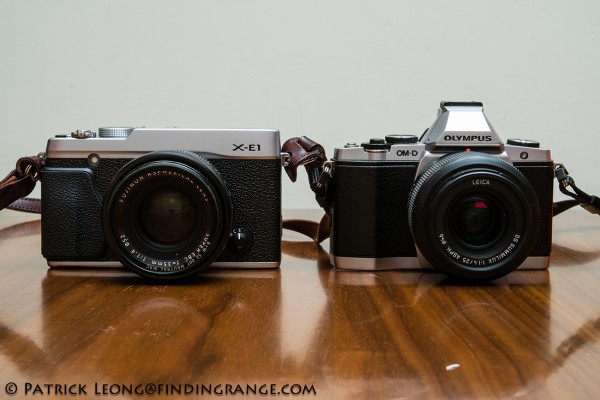
↑ The Fuji X-E1 or the Olympus OM-D E-M5…which one do you prefer?
Whether you decide to get the X-E1 or the OM-D you will be glad to know that both cameras are built very well. There are no complaints here as both offer solid construction, and in my opinion, are great looking cameras, which is always a plus, right? ;). The OM-D does feel a bit more solid and dense to me, but you can’t go wrong with either camera.
The one thing that’s kind of useful with the Fuji is that because it does not have the hybrid viewfinder of the X-Pro1, it has space for a pop up flash. The Olympus does not have one. There are definitely limits to what the flash or any pop up flash can do but, nevertheless, it is still a very useful feature. I used it once or twice :).
LCD Screen Quality of The Fuji X-E1 And Olympus OM-D:
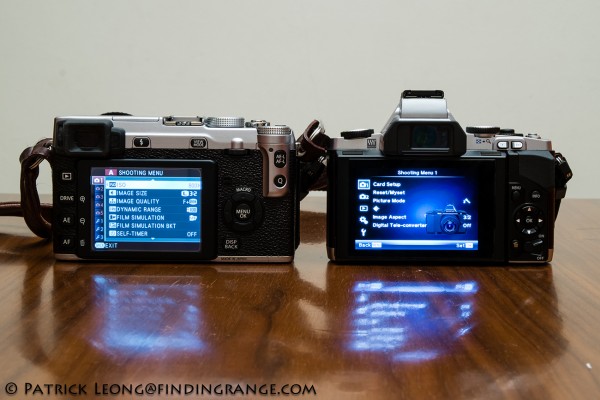
↑ A view of both these cameras’ LCD screens.
I don’t put too much weight on having the best LCD screen out there when deciding to purchase a new camera but there is no denying the fact that the OM-D definitely has a better screen than the X-E1. It’s a beautiful 3.0 inch OLED screen with touch capabilities. Furthermore, the screen can tilt. I’m personally not a fan of tilting LCD screens because I’m a bit old school, and feel that having a solid unibody would be more beneficial. Plus, parts get loose over time but the OM-D’s is built really well, and the person I borrowed it from has had it since it’s release with no issues at all. He’s been all over the world with it, and the moving parts still feel just as sturdy as they did when he first opened the box. Now, let’s talk about the touch capabilities of the OM-D.
When I first got the chance to use the Olympus OM-D, it’s “Ipod like” touch capabilities really impressed me. You can “pinch” and expand images very smoothly. You can scroll through images with your fingers very smoothly. You can also shoot by just touching the screen. It really works well (definitely better than my old Blackberry 🙂 ). You simply look at your screen, and use your finger to tap on the area in which you would like the OM-D to focus and shoot. Simple as that. Choosing the focal point so conveniently is one thing I really like about the OM-D. With the X-E1, if you want to change the focus point, you have to manually adjust it through the menu, and then shoot.
One thing I should mention about the touch screen is that it can sometimes be a bit sensitive when snapping a photo . I guess it’s really a combination of sensitivity, and the fact that the screen is so big for such a small camera. I snapped quite a few photos by accident because I touched the screen accidentally. It can be slightly annoying. Plus, since the touch screen is so easy to use to take a photo with, sometimes I just snap away because I know I can get away with it. Everything is a bit slower on the Fuji but I find myself sometimes taking a bit more time to compose a photo, which I like.
EVF Quality of the Fuji X-E1 vs. Olympus OM-D:
As many of you know, both of these cameras have electronic viewfinders instead of optical viewfinders. You can’t go wrong with either camera because both cameras have excellent EVF’s. In my opinion, it really comes down to preference. The OM-D’s viewfinder has pretty much no lag, which is definite plus. There isn’t necessarily a significant lag with the Fuji but the OM-D’s EVF just feels smoother. However, there is slight lag with Fuji’s EVF in darker settings. But some of this could also be caused by the fact that the viewfinder of the X-E1 is a 2.36 million dot OLED vs. the OM-D’s 1.44 million dot.
The OM-D viewfinder also reacts a bit faster. For instance, sometimes when I take the lens cap off my X-E1, it takes a bit of time for the EVF to adjust to the light. But a way that I speed this up is just by depressing the shutter button slightly.
So why do I prefer the X-E1’s viewfinder over the OM-D’s? Well, I honestly don’t feel the differences between these two excellent viewfinders to be too great. Again, this is my opinion, which might differ from yours. In the end, I prefer the colors in the Fuji viewfinder over the Oly’s. I get quite a few emails from photographers who have never used an EVF asking me if I can truly live with just an EVF on the X-E1. Well, the answer is that both of these EVF’s work very well, and I often forget that I’m even using EVF’s instead of optical viewfinders. I never have any trouble looking through either the Fuji’s or the Olympus’ electronic viewfinders.
Image Stabilization Effectiveness on The Fuji X-E1 And Olympus OM-D:
Out of these two cameras, only the OM-D has image stabilization built in. The image stabilization on the Olympus OM-D is fantastic. You can shoot at insanely low shutter speeds hand held. Google OM-D shots, and you’ll find these photographers shooting at crazy low shutter speeds. It’s really true. The only way to get image stabilization with the X-E1 is to purchase the zoom. The zoom’s image stabilization is quite good but it isn’t quite as good as the Oly’s in-camera stabilization.
Weather Sealing, None on The X-E1?:
Unlike the X-E1, the OM-D is weather sealed, which can definitely come in handy. I wouldn’t suggest throwing a bucket of water on it to test it but it can definitely add a bit of confidence when you want to go out in the rain to take some photos. However, keep in mind that not all lenses for the Olympus are weather sealed, so just make sure you choose accordingly when you decide to test your OM-D out in wet conditions :).
Fuji X-E1 vs. Olympus OM-D Feel And Handling:
Feel and handling are both very important when considering a new camera. The truth is, you have to be comfortable with what you’re shooting with because if you’re not, you probably won’t be using it as much as you were hoping to. Then you’ll be checking out the web for a quick replacement, which sucks :).
The Olympus OM-D is a bit smaller than the X-E1, which is definitely a plus. Small size is one of the reasons why so many love mirrorless cameras. But in my opinion, the smaller size of the OM-D makes it feel a bit awkward in my hands. I don’t have particularly big hands but the OM-D definitely did not feel as comfortable in my hands as the Fuji X-E1. The X-E1 fits my hand like a glove. It almost feels like a Leica Mp or M6 pre-TTL.
Yes, I prefer the feel of the X-E1 in my hands over the Oly but how about some of the general controls? Well, one of the biggest reasons why I chose to purchase my X-E1 is because the layout and controls are very minimalistic. All the main controls are out there, and easy to get to. For instance, I love how the shutter speed dial is mechanically adjustable, and can be accessed with ease from the top of the camera. Also, the aperture adjustment is done by moving the aperture ring on the Fuji lenses. Overall, in my opinion, the X-E1 just gives me more of an analog feel, which I prefer. Its analog feel is really one of the biggest selling points of the camera, and that’s why it is often compared to a Leica. The X-E1 really fills a certain niche for photographers without having to spend $7,000 for an M camera.
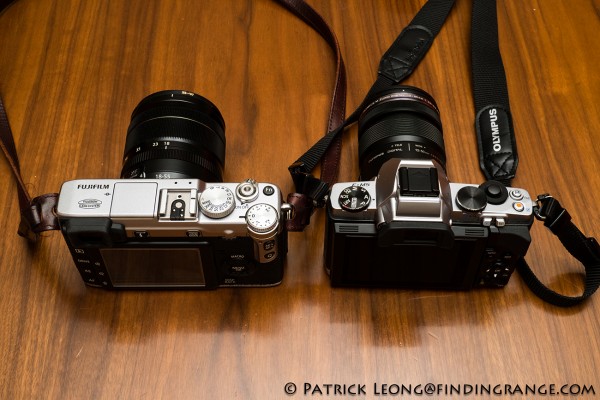
↑ Here’s a top view of both of these cameras.
With the OM-D, aperture and shutter speed are adjusted electronically by playing around with scroll wheels on the camera. When I’m walking around taking pictures, I want to adjust aperture and shutter speed quickly, and I often do it before I lift the camera up to my face. Maybe adjusting shutter isn’t as important as back in the day because now we have aperture priority mode but adjusting aperture is something I’m always thinking about. In my opinion, the phrase, “if it ain’t broke, don’t fix it” applies here because being able to mechanically adjust my aperture and shutter speed simply work without any fuss. In my opinion, some things just don’t need to be high tech but cost probably came into consideration for Olympus as well, since adding mechanical features can often increase production costs. Again, this is really preference, and therefore, may not apply to you.
In terms of the menu system, I definitely find Fuji’s simpler and more basic menu easier to navigate. But again, this is my preference, and it may differ from others. To me, the Leica M9 still has the best menu system in my book because it’s just very simple, basic, and straight to the point. Electronically, the OM-D has so many features, which can make one feel like they’re really getting their money’s worth but at the same time, it will definitely need some time to get used to. In all honestly, it’s probably one of the most highly configurable cameras out there. For many, that’s a huge plus. But for me, I just prefer a simpler system only because I find it allows me to concentrate more on the photography. I don’t even do any customization in my Fujis. It’s one of the reasons for why I love the Fujis and the Leicas.
Also, I find the buttons on the Olympus OM-D a bit fiddly and small, which might cause a bit of frustration if you have larger hands. Furthermore, the buttons on the Fuji have a nicer feel than the squishy feeling buttons of the Olympus. Another issue I have with the OM-D is the shutter button, which to me, feels a bit too sensitive. The one thing that I get from using the OM-D for quite some time is that it can feel like a speed demon. Everything is fast on it from the autofocus to the viewfinder, which virtually has no lag. But to me, the shutter button almost feels like a nervous race car driver who was too eager, and leaped off the starting line before the green flag was waved. There were several times when random shots were fired by accident, when my hand accidentally brushed over the shutter button.
The Fuji wasn’t perfect either though. I find that sometimes you end up hitting some of the buttons by accident when you’re shooting with it particularly the ones near your thumb. I know several other people who have X-E1’s or X-Pro1’s who feel the same way. But the shutter button is more deliberate, and it has a better feel than the OM-D’s.
Autofocus Capabilities of the Fuji X-E1 and Olympus OM-D:
There is not a doubt in my mind that the Olympus OM-D autofocus is superior to the Fuji’s. The autofocus on the Oly is very fast and accurate. It almost feels telepathic, seriously lol. It is also very quiet. I tried it in all conditions, and there really don’t seem to be any issues with the focusing.
The X-E1 on the other hand just can’t keep up with the autofocus speed of the OM-D. I knew what I was going to get when I purchased the X-E1, and I really believe the X-E1 has many other key features that make it an excellent camera. But the autofocus is really quicker and more accurate on the OM-D than it is with the X-E1.
It is true that if you have the new zoom for the Fuji, the autofocus is a lot quicker. That’s part of the reason for why I like the XF 18-55mm F2.8-4 R lens so much. The focusing is also quieter. But even with that lens attached to it, it’s still not quite as fast as the OM-D.
Fuji X-E1 And Olympus OM-D Image Quality:
Both cameras are in the top tier of the mirrorless class in terms of overall image quality. I am very, VERY happy with the results from both cameras, and you honestly can’t go wrong with either one. But there are many who believe that the Fuji does beat the Olympus in image quality because of several reasons (one being sensor size).
After shooting with both cameras for quite a bit of time, I have to say that I agree with them. Olympus lovers, please don’t send me hate mail, but to my eye, I definitely see the edge the Fuji has, and it’s one of the reasons why I along with many other people chose to purchase the Fuji X-E1. To me, images from Fuji have slightly more “pop”. Everything looks a bit richer; similar to what a medium format sensor can produce vs. a full frame sensor. There is slightly more clarity to the images. This does not mean that the OM-D is bad in any way. I’ve seen some fantastic work shot with the OM-D (check out some of the amazing shots posted on the Olympus Facebook page), and anyone should be completely content with what the OM-D can produce. In fact, I’ve loved the Pen line, and am amazed at how far Olympus has pushed the four third sensor. It’s just that to my eye, I prefer the Fuji’s image quality.
How about the bokeh? Is there really a big difference between the shallow depth of field of these two cameras? Well, the Fuji has a bigger sensor, which means it should be capable of producing a shallower depth of field, and it definitely does. Yeah, you could put the Olympus 75mm F1.8 lens on your OM-D to get really beautiful bokeh but you’d be shooting essentially a 150mm lens. Some situations just don’t require that much telephoto power. I will discuss more on bokeh in part two of this comparison when I compare the Panasonic 25mm F1.4 and the XF 35mm F1.4 R lens.
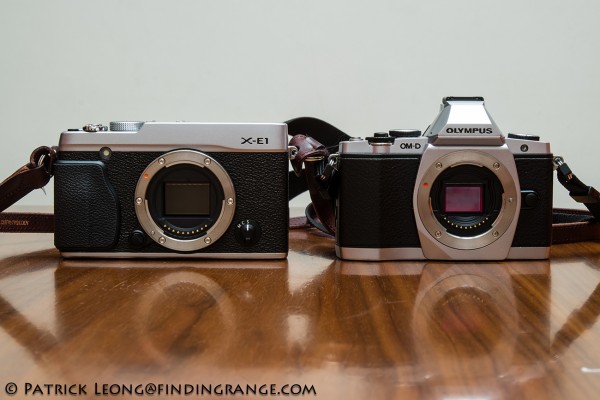
↑ The sensors of the X-E1 and the OM-D.
Fuji X-E1 And Olympus OM-D ISO Capability:
Again, both cameras excel in the high ISO capability department but I do believe the X-E1 has a slight edge over the Olympus. But credit needs to be given to Olympus for making a small sensor that can produce such great high ISO results. Below, I provided OOC jpegs for you. The cameras were set to their standard settings with auto white balance on. In each photo, the left side was shot with the X-E1, and the right was shot with the OM-D:
- Fuji X-E1 at 200 ISO
- Olympus OM-D at 200 ISO
- Fuji X-E1 vs Olympus OM-D 200 ISO
- Fuji X-E1 vs Olympus OM-D 250 ISO
- Fuji X-E1 vs Olympus OM-D 320 ISO
- Fuji X-E1 vs Olympus OM-D 400 ISO
- Fuji X-E1 vs Olympus OM-D 500 ISO
- Fuji X-E1 vs Olympus OM-D 640 ISO
- Fuji X-E1 vs Olympus OM-D 800 ISO
- Fuji X-E1 vs Olympus OM-D 1000 ISO
- Fuji X-E1 vs Olympus OM-D 1250 ISO
- Fuji X-E1 vs Olympus OM-D 1600 ISO
- Fuji X-E1 vs Olympus OM-D 2000 ISO
- Fuji X-E1 vs Olympus OM-D 2500 ISO
- Fuji X-E1 vs Olympus OM-D 3200 ISO
- Fuji X-E1 vs Olympus OM-D 4000 ISO
- Fuji X-E1 vs Olympus OM-D 5000 ISO
- Fuji X-E1 vs Olympus OM-D 6400 ISO
- Fuji X-E1 vs Olympus OM-D 12800 ISO
- Fuji X-E1 vs Olympus OM-D 25600 ISO
The jpegs should back up what I’m saying but in the real world, the differences are more apparent. You can really crank up the X-E1, and it will be pretty hard to tell you’re not shooting at a much lower ISO speed. With the Olympus, you can do the same thing but you don’t get quite the same results. You lose a little bit of vibrance. To my eye, I’m impressed with what the OM-D can achieve but at the same time, it feels like it loses a little bit more versus the Fuji.
Lens Choices of the Fuji X-E1 And Olympus OM-D:
In terms of lens choice, the OM-D definitely has the upper hand. I always thought that it was so cool to be able to use Panasonic lenses on Oly cameras or vice-versa without adapters. But it doesn’t just stop there. There are many other companies, such as SLR magic, and even Voigtlander (for instance, the Voigtlander 25mm F0.95) who make lenses for the micro four thirds system.
The Fuji X series interchangeable lens system is still relatively new, and therefore, has a much smaller choice in what lenses you can buy for it…at least for now. The good news is that Fuji has a lens lineup that they’re sticking too, and even Zeiss has jumped on board in producing lenses for the Fuji X Series system. But still, you can’t beat the lens choices for the Olympus.
However, let me ask you all something…how many lenses are you really going to buy? Personally, I don’t have a huge lens collection because I honestly don’t need it. I prefer primes, so I pick a general wide angle, a standard lens, and maybe a short telephoto. I also have the zoom when I feel like just using a zoom. Yes, maybe you have more choices of 50mm’s with the Oly but how many 50mm’s do you really need? 🙂
However, you could also argue that by offering more choices, Olympus is allowing more people to get into the game because more choices means more lenses with a variety of prices. Fuji branded lenses start at about $600, and the anticipated prices for the Zeiss lenses are going to be over $1,000. That’s a huge chunk of change, especially for someone who is starting out or is entering into a new system. Also, the great thing about the Oly compatible lenses is that they also work on lower priced cameras, such as the Pen line. This means that if you’re upgrading from a Pen, you can use your existing Pen lenses on your OM-D.
So What’s The Verdict? The Fuji X-E1 or the Olympus OM-D?:
In my opinion both Fuji, and Olympus have different approaches as to what they believe is the best type of mirrorless camera. To me, the OM-D is at the zenith of high tech gadgetry, where as the X-E1 is all about bringing back the basic foundations of photography.
Electronically, the OM-D is simply awesome. It’s fast, it’s incredibly customizable, and the autofocus is top notch. Taking photos with it is just so easy in a good way. The X-E1 concentrates more on the analog feel. The X-E1 is a no-nonsense camera that has actual manual controls that can really help you concentrate on what’s important: the photograph. It’s slower, which in a way slows you down a bit making you more methodical and concentrated on finding a good photograph. Both offer superb image quality so it really comes down to preference. You shouldn’t be thinking about which camera is best but more about which camera fits your personality and style of photography the best. You really can’t go wrong purchasing either one of these awesome cameras.
If you’re a reader of my blog, you’ll know what I chose: the Fuji X-E1. I bought it when it first came out here in the U.S because of my wonderful experience with the X-Pro1. I’ve used it since its release, and I have no regrets at all about purchasing it. I just love the manual controls (I really do), and analog feel. Plus, I’m in love with the image quality. The only other camera that I can think of that feels like this is probably my old M9 (which has an even more analog feel) but purchasing a new Leica M-E or even the Leica M will set you back $5,500 to 7,000. The X-E1 is no rangefinder but for $1,000 bucks it’s probably the closest you’ll get to what a digital rangefinder will feel like.
Yes, the autofocus is definitely slower than the OM-D’s but I think it’s perfectly fine. I’ve been shooting with Leicas forever, and hey, they’re all manual focus cameras. Even with the OM-D I still take my time when I take pictures. It’s just my style. Yes, the X-E1’s electronic wizardry is not up to the OM-D’s but that is precisely why I chose the X-E1. It’s a no-nonsense camera that concentrates on the essentials of photography. I love that purity, which I think is quite lacking these days in photography. Honestly, I find a lot of the electronic gadgetry in cameras these days a little too much for me. It’s one of the reasons why I still buy Leicas. But again, THIS IS MY PREFERENCE, WHICH MIGHT DIFFER FROM YOURS :). But that’s ok because it’s the 21st century, and in this century we have so many choices in everything we buy. Look at cars nowadays…we even have four door coupes :). Luckily, whatever camera you decide to choose, there is no wrong choice because both will give you years of joy…until the updated versions come out, and you have a GAS (Gear Acquisition Syndrome) attack ;).
Thanks for taking the time to read my comparison. Remember, this is only part 1. Next up will be part 2, which basically compares both the Panasonic 25mm F1.4 and the XF 35 F1.4 R lens. Take care, everyone!

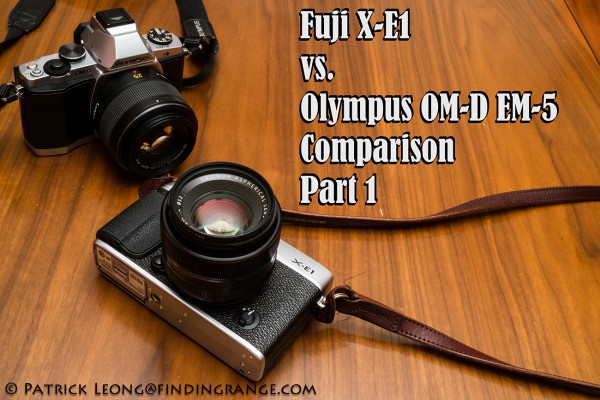
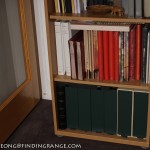


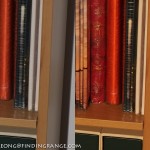

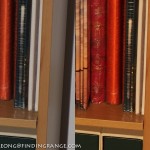

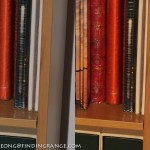
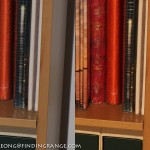
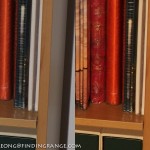

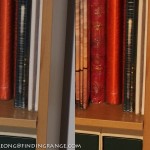

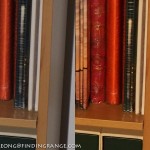
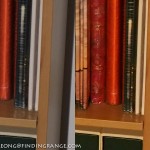



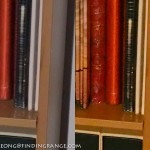
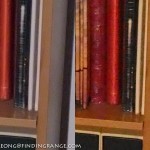
The most detailed, even-handed and useful camera vs. camera review I’ve read in a long, long time. No snarky comments, no overstated personal opinions: just useful and unbiased information. Keep up the good work!
Thank you for your kind words! Stay tuned for Part 2 where I compare the Panasonic 25 1.4 with the XF 35mm F1.4. Take care!
From looking at the OM-D images i suspect that the JPGs suffer from the “warm colour” setting in the camera.
Hi,
Thanks for your input. Both cameras were at default settings.
I have been working with both the X-E1 and the OM-D for some time now, and I found this review to be one of the more useful and pragmatic attempts to describe the differences between these two cameras – well done and thank you. I struggle mightily between the image quality of the X-E1 and the lightning quick auto-focus of the OM-D, in part because some of my shooting involves children, and we know how they move around! But even with its slow AF, some of my most beautiful shots have been taken with the Fuji. What I wouldn’t pay for a Fuji X camera with Oly’s AF!
Hi Rich,
Thank you so much for your kind words, and for taking the time out to read my comparison! It means a lot to me that you enjoyed reading it. I know what you mean, I love the Fuji image quality but the Olympus’ AF is so fast. Sometimes it feels almost telepathic! When I use the Fuji to take photos of my sister’s golden retriever, it’s pretty hard, especially since her dog can be shy sometimes. But who knows, maybe Fuji will do something about the AF speed in future models since it’s one of the main concerns of most Fuji shooters. Btw, I check out your website through Twitter, and you have some amazing photos on it! Thanks for stopping by!
Patrick
“The X-E1 is no rangefinder but for $1,000 bucks it’s probably the closest you’ll get to what a digital rangefinder will feel like.”
What about the $800 Epson R-D1 digital rangefinder? I’d say that would be closer to an RF experience 😉
Great point, Calle! Thanks for your comment!
Patrick
Nice comparison. I own both of them and love both of them for different reasons, just as u said. Keep the good work 🙂
Hey Sigma82,
Sorry for the late reply! Thanks for the nice comment and support! Yeah, both are great cameras, each with their own strengths and weaknesses.
Thanks for visiting!
Patrick
Thank you for your review ,I like it to reade 🙂 .
You helped me because I am searching a system camera
with good image quality and a retro design like my ricoh kr 10 x
Thanks, I’m glad you like it! 🙂 Thanks for taking the time out to read it! I hope you enjoy whichever camera you decided on getting!
Hello Patrick,
I am recently considering to buy x-e1, pls could you tell me if af speed is really improved by applying latest firmware update (for body and lens),
as fujifilm says on their page? thank you Peter
Hi Peter,
Thanks for commenting. I find the AF speed has definitely improved after the recent firmware update. My XF 35mm focuses quicker, and even my XF 60mm is faster, and that was my slowest focusing lens. The AF is also more reliable. For instance, it locks on in a lot of conditions that it use to have trouble with before. It also focuses better in lower contrast settings. Plus, if you decide to use manual lenses with the M adapter (which I’m planning on reviewing in the near future), the added focus peaking feature works great. I hope this answers your question. Please feel free to contact me again, if you have any other questions. Thanks for stopping by!
Take care,
Patrick
Another thing to consider for me is which lens to choose. Currently Fujifilm has a good offer, when you take kit x-e1, you get another prime lens for free. (At least here in Slovakia). So I will take a zoom within a kit and plus 35/1.4. Do you think it is a good choise? Price is 1329 EUR. Another question is stabilization, which is missing on 35/1.4 lens. Do I need to use tripod more often?
So far I had only ultrazoom from Panasonic with IS, so I don’t know.
At this price I was also considering new Canon 70d, but your pictures and reviews has decided 🙂
Hi Peter,
Nice hearing from you again. Thank you for taking the time out to look at my photos and read my reviews. It means a lot :). Yes, I think we have a similar offer here in the United States. The zoom and the 35mm F1.4 are my two favorite lenses for the Fuji. It’s a great choice. The zoom is a great all around lens that focuses quickly, and produces great image quality. The 35mm is great for portraits, and simply one of the best 50mm equivalents that I’ve ever used. I think you will love what the XF 35 can produce.
Image stabilization on the zoom does help me shoot at much lower speeds but I don’t have any real problems with the 35mm. I rarely bring a tripod except only when I’m shooting scenic shots at night, and I need to shoot with a longer exposure. There’s no mirror in the X-E1 like there is in a DSLR, so there’s less vibration when you shoot a photo. Therefore, it’s much easier to shoot at lower shutter speeds. The lens is also very fast (F1.4), so that should help you out in shooting in darker settings. If you must push the ISO up to higher speeds, you can easily do that because the high ISO capability of the X-E1 is excellent.
I hope this helps!
All the best,
Patrick
Patrick, regarding the battery usage, how many pics do you usually take per one charge? do you take photos using evf or lcd ? thanks a lot
Hi Peter,
I make it a habit of charging my battery for my cameras every time I use them, so I’m not exactly sure how many photos I can really get out of one battery. I can definitely get a few hundred shots per charge, and usually one battery is good enough for me unless I’m at a wedding or a portrait shoot. In that case, I usually just bring the battery from my X-Pro1. But batteries are priced okay, so if you do decide to buy the X-E1, test it out, and only order more batteries if you feel that you need it. As of now, I never bought a spare. But depending on what you shoot, your needs may be different than mine. There’s a joke amongst photographers: The best picture that you’ll ever take will the one after the battery fails lol ;).
In terms of how I take pictures, I mostly use the EVF when I’m shooting. I’ll use the LCD screen when I’m taking product shots or if I’m shooting landscape (sometimes, it’s hard to look through the viewfinder if the camera is awkwardly positioned on the tripod). Let me know if this helps,
Take care,
Patrick
Hi Patrick,
yes, the spare battery is no problem, I was just wondering whether it’s not drained very soon, first I will test it, I have used to make 300-400 pics with my ultrazoom, so I think it’ll be more less the same.
what tripod do you recommend for x-e1?
PS:yes, I know that joke, also from my own experience 🙂
Hi Peter,
Yeah, I think you should be able to get around 300-400 shots. I usually charge my battery right after, so I never really used it up. Tripod wise, I use an old Gitzo Weekend Performance…it’s from my film days actually. The tripod is probably 20 years old or something lol. But any good tripod will do…even Manfrotto makes some but I haven’t used them before. The great thing about cameras like the Fuji is since they’re so light, you don’t necessarily have to carry such a big tripod. A bigger tripod might give you a little more stability but get one that is also easy to carry. Just make sure you buy a ball head that will support the weight of the camera, and you should be fine. I hope this helps,
Take care,
Patrick
Hi Patrick,
what about RAW files? Do you use Lightroom or Silkypix? Which one has better support for conversion by your experience?
Thanks a lot for your info!
Peter
Hi Peter,
I use Photoshop to process my RAW files. It’s what I use for everything. Some people prefer other programs like Silkypix or Capture One but my personal preference has always been Photoshop, and this goes with all of my cameras.
Take care!
Patrick
Hi Patrick,
another question, do you any filter (UV, protector.. etc) for XF lens?
If yes, which brand is best by your experience?
Thank you.
PS: I’ve already got my X-E1, my first impression is very possitive, right camera size, right controls on right place 🙂 ! And quality is excellent !
Peter
Hi Peter,
Great to hear you finally bought the X-E1, and I’m glad you like it! Yes, I do use filters…I use B+W Clear with Multi-Resistant Coating (007M) filters. These filters are completely clear with no UV/Haze protection. They claim that they stay cleaner over time as well, which I actually found is true. Plus, there was one time I bumped the front element on the edge of a glass table, and there were absolutely no scratches or cracks on my filter…saved the front element of my lens. They’re more expensive than some but these are in my opinion the best filters out there. Fee free to share any photos or even a user experience in the future!
Thanks again,
Patrick
Hello Patrick, B+W filter you use is the slim version?
Can I still use lens hood with slim filter on the lens?
thank you
Hi Peter,
It’s always great to hear from you. I believe mine is the slim version, and yes, the one I recommended to you works with the lens hood.
Take care,
Patrick
Hi Peter,
You convinced me to buy the EX instead of OLY.
But, after some years with a NIKON 5100, I’ m used to articulated LCD.
Do you think that I’ll have a problem without it? Let’ s say in night shots or in difficult angles of shooting (near the ground etc).
Thank you for your fine articles!
Cris
Hi Cris,
Thanks for commenting and for taking the time out to read my posts! It really depends on how much you rely on the articulated LCD screen. It was nice to have on the Oly but to be honest, I never really used it whereas someone like my brother in-law swears by it. I think if you decide to buy the Fuji, it’ll take some time to get use to the fixed LCD screen but after a while, it shouldn’t be much of a problem. I’ve done a lot of night shots with the Fuji with no issues. I hope this helps.
Also, the X-E2 should be coming out on November 15th, so I would definitely wait for it. It’ll be totally worth it :)!
Take care,
Patrick
Hi Cris,
Thanks for commenting and for taking the time out to read my posts! It really depends on how much you rely on the articulated LCD screen. It was nice to have on the Oly but to be honest, I never really used it whereas someone like my brother in-law swears by it. I think if you decide to buy the Fuji, it’ll take some time to get use to the fixed LCD screen but after a while, it shouldn’t be much of a problem. I’ve done a lot of night shots with the Fuji with no issues. I hope this helps.
Also, the X-E2 should be coming out on November 15th, so I would definitely wait for it. It’ll be totally worth it 🙂 !
Take care,
Patrick
To start, I have to admit that I am a very happy Fuji owner, having gone from a wonderful experience with the X100S to even more enjoyment with the X-E2 & the two zoom lenses (18-55 & 55-200) that I started with. But I have to also say that in the back of my mind there has always been the nagging question about whether I should have maybe taken a closer look at the Oly OM-D E-M5 (that’s a mouthful). And in all honesty again, the reason I didn’t even after hearing many the good things being said about the Oly was the fact that I was coming from owning a line of Nikon APS-C sensor cameras (last one a D7000) & just thought I wouldn’t be happy with the smaller Oly sensor.
So having just discovered Patrick’s blog, I was extremely interested in his very complete appraisal of these two cameras, & not just because his observations & conclusions somewhat reinforced my gut decision. But really because it carefully & closely looks at all of the important features of these two cameras that are meaningful to serious or even professional users (I’m clearly only in the former class). Getting not only an analysis of the ergonomic differences but the opportunity to see side-by-side images they create really gave me much more than I know I would have picked up if I simply had gone to my local camera store & spent even a half an hour with the Oly. And being also of the old school system of photography I find his thinking & observations to really resonate with me.
I look forward to getting a lot more of the same on this most interesting photography blog site & have bookmarked it for planned frequent browsing.
Hi Jed,
Welcome to the the world of Fuji X Series cameras and thanks for bookmarking my site! I’m really glad that you found the comparison helpful. I’m sure many Fuji and Oly owners have had the same nagging question about whether they should’ve invested in the other system. Both cameras offer a lot, and they each have their own particular strengths that many photographers find appealing. It’s definitely hard choosing :)!
The Oly is a great camera, and there are a lot of features that are simply amazing on that camera. The first thing that comes to mind for me is the extremely fast autofocus. I haven’t used the E-M5 in quite a while but if I recall correctly, the autofocus felt almost telepathic :).
Since this post, both cameras have been replaced by newer models, and I’m thinking about writing up a new comparison between the X-E2 and OM-D E-M1 in the future. I played with the new E-M1, and I really like it…more so than the E-M5. It made me wonder if I made the right decision buying the new X-E2 :).
Again, thanks for visiting my site! I just hope you’ll enjoy my future posts, and become a regular here!
All the best!
Patrick
Hi. I read many x-e1 reviews and your review and went out and bought it. It is cheaper now because of the new x-e2. After trying it out for 5 days and looking at the pics, I am seriously thinking about returning it. I don’t know why many people are replacing their pro canon or Nikon gears with this.
I have a 5d3 and want a smaller camera with great IQ for traveling.
Reasons that I don’t like the x-e1:
Note I have the latest firmware for both lens and body.
-half of the pics are blurry, even in sunny day. I have OIS on the kit on. Speed is always 1/60 or above.
– grip is barely adequate.
-focus speed is so so
– there is a delay when you click the shuttle button.
-evf is good but nowhere compared to the real Ovf
-battery life is so so.
– there is a humming noise from the body. I called fuji and they said their test body has similar noise, though they don’t know what it is. I have not experience this with canon or Nikon bodies.
For me, the most important thing is IQ. If the picture is not blurry then it is not bad but not as good as the bigger canon or Nikon. At least not enough for me to make a jump.
Thanks-
Hi James,
Sorry to hear about your troubles with the X-E1. But I appreciate you taking the time out to let me know about your experience, and for checking out my site. Thanks for visiting,
All the best,
Patrick
Interesting comparation, sir
I have X-E1 and used to have EM5 (change it to EM1).
I love both Fuji X and Olympus m4/3
Interested in getting XT1 too! 🙂
Personally, my biggest complaint about Fuji is its aggressive noise reduction in jpeg, especially when I shoot portrait. In RAW is just fine although Adobe conversion isn’t as good as Fuji jpeg.
On the other side, Olympus is a tiny bit noisier compared to Fuji at high iso, but it still maintains details. ISO 3200-6400 EM5 and EM1 is still pretty nice to capture skin details. I usually set zero NR (-2 on Oly).
But again it’s a matter of taste.
That’s why I use Fuji X for street and Olympus m4/3 for portraiture.
Hi Mike,
I appreciate you stopping by and taking the time out to check out my comparison. I definitely can’t blame you for loving both systems. I love using the Fuji stuff but the Oly system has definitely tempted me more than a few times. My brother in-law is a big Olympus fan, and he’s upgraded to the new E-M1 as well, so I’ve been borrowing it from him a lot. It’s a fantastic camera. While the dimensions are roughly the same as the X-T1, the E-M1 just feels smaller to me when I’m using it. Some of this is probably attributed to the lenses my brother in-law owns, which are so compact. He has a few different lenses but one of my favorites is the 12mm F2.0. Also, there are things that the Oly is better at (and vice versa) even with the newly released X-T1 on Fuji’s side.
It’s great that you have both systems; if you get the chance, stop by in the future to check out my X-T1 and E-M1 comparison, which I’m writing up! Thanks again for visiting!
Best regards,
Patrick
Was this comparison done with the latest firmware updates to the x-e1?? I’m in the market, but I wonder about the AF speed compared to my e-m5…I’ve just heard that the firmware updates really helped the AF nicely
Hi Nathan,
Sorry for the late reply! I’ve been crazy busy this month. This article was written quite a long time ago, so the X-E1 did not have the latest firmware. However, even with the latest firmware, your E-M5 would still be faster. If you have any other questions, please feel free to ask. Thanks for taking the time to leave a comment,
Kind regards,
Patrick
Hi, Patrick! I’m new on this site and relatively new on Photography anyway. But this analysis is simply awesome, absolutely great work. Thanks a million, man!
Hi Pablo,
Sorry for the late reply! Thanks for the kind words and welcome to photography! Let me anytime if you have any questions. I will be happy to help!
Best regards,
Patrick